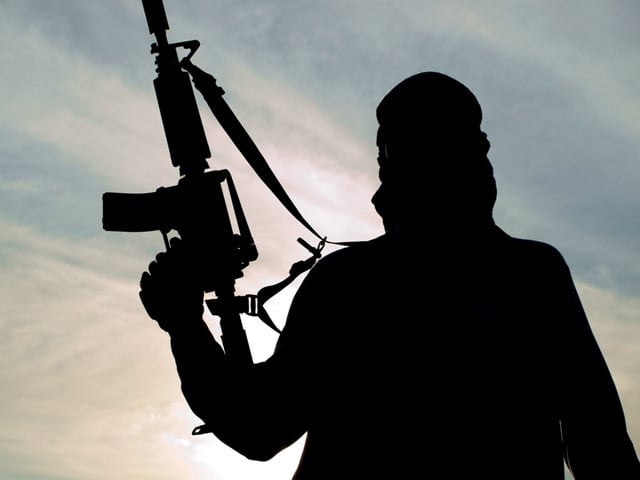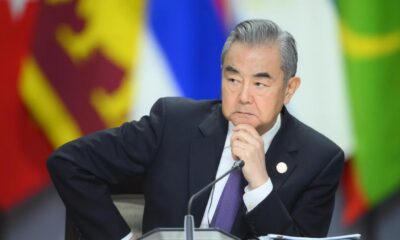Asia
Islamabad requests Taliban to clamp down on TTP

Pakistan is pushing to secure “fresh commitment” from the Afghan Taliban to shift their strategic calculus on support to the Pakistani Taliban or Tehreek-e-Taliban Pakistan (TTP) after a high-level and powerful delegation visited Kabul just days ago.
The surprise visit, which included ISI chief, led by Pakistan’s Defense Minister Khawaja Asif was aimed to encourage and convince the Taliban to help Islamabad fight the TTP, a group that has intensified attacks in Pakistan in the past two years.
Though the office of Mullah Baradar, deputy economic chief minister of the Taliban in a statement said that the two sides discussed economic cooperation, regional relations, and trade, however, several sources said that TTP and border issues were the main agenda of the meeting.
TTP is a hot issue as it ramped up their attacks, seemingly embolden by the return of Taliban to power in August 2021. According to a UN report, TTP are regrouping and reorganizing with their leadership headquartered in Afghanistan. The outlawed faction was also able to fundraise through extortion inside Pakistan as well as in Afghanistan.
Afghanistan has been in war in the past 40 years where multiple militant groups found safe havens there, but the Taliban said they have full control on every province and will not let anyone use the Afghan soil against other countries.
Islamabad has evidence of TTP hideouts in Afghanistan
Pakistan has presented “irrefutable evidence” to the Afghan Taliban about the presence of (TTP) hideouts and precise location of its leadership in Afghanistan, The Express Tribune reported.
The evidence was shared during the visit of Pakistani delegation led by Asif to Kabul and the only one point agenda was focusing on counter terrorism and presence of the TTP sanctuaries on the Afghan soil.
Indeed, it is the first high-level delegation seeking Taliban support against TTP as a clear shift in Pakistan’s stance on the group after the recent spike in terrorist attacks.
The visit also conveyed a message that Pakistan’s civil and military leadership no longer seek talks with the TTP and in the meantime are trying to engage in talks with Taliban not to support them.
It was the first time that Pakistan top security officials visited the Taliban for help, while the Taliban in contrary to the Pakistani media reports, said that they discussed mutual cooperation in areas of trade and border issues.
TTP is internal issue of Pakistan
It is very clear that TTP is based in Pakistan and they are Pakistani Taliban, two officials within the Taliban told Harici on Saturday.
They said that TTP is not a “foreign group” and the Pakistani authorities are well aware of the fact that TTP has deep roots in Pakistani society and they are stationed there. “We strongly reject the claim that TTP leadership are based in Afghanistan, but we have evidence to prove that TTP leaders are in Pakistan,” he said.
During the meeting, Pakistani side came up with some proposal to resolve TTP issue, but the Taliban rejected the presentation and said they are much aware of the situation and don’t need their proposal.
The Pakistani side tried to explain further, but the Taliban did not satisfy and instead that TTP is an internal issue of Pakistan, but assured to stand ready to help and work for regional peace and security.
Taliban, TTP and Pakistan
Pakistan is not happy with the support the Afghan Taliban is providing to TTP. This goes in direct contrast with Pakistan’s expectation that Taliban will pay attention to them carefully and will abide and do what Islamabad will say.
“The Afghans are known for their hospitality. We are more than happy to receive guests, especially from our neighboring countries, but that doesn’t mean we accept any order or command,” a Taliban official said.
Speaking to Harici in condition of anonymity, he said that the Pakistani delegation held talks with Taliban leadership and they agreed to work on a mechanism to enable both the countries to jointly fight the menace of terrorism.
“The meetings were held in a cordial atmosphere, and both sides agreed on several fronts.”
Pakistan needs Afghanistan’s support against TTP
The visit of Pakistan’s delegation came amid increasing anger in Pakistan as TTP and Islamabad failed to keep a long-months ceasefire that came to an end in late November.
The Afghan Taliban played a huge role in reaching a ceasefire between them, and they also hosted several rounds of talks between TTP members and Pakistani officials in Kabul but all of them ended with no results.
Since the end of the ceasefire, Pakistani officials said that TTP is enjoying full support from the Afghan Taliban and they carried several attacks against its security forces from Afghanistan.
“Terrorist groups impose a threat to the region and the world from inside Afghanistan, Pakistan’s Foreign Minister Bilawal Bhutto said on the sidelines of the Munich Security Conference 2023 last week.
Political exports believe that Pakistan has lost control of the Afghan Taliban who once they supported against the previous government and foreign troops and also not capable of handling TTP by itself.
Pakistan is suffering from a poor political and security situation and its army is not capable of maintaining security or dealing with any sort of terroristic activities.
Asia
Japanese prime minister warns of US tariffs’ impact on global economy

Japanese Prime Minister Shigeru Ishiba warned on Monday that US tariffs could disrupt the global economic order. However, he also emphasized that Japan would seek common ground with the US on how the two countries could cooperate on various issues, from trade to national security.
“When negotiating with the US, we need to understand the logic and emotional elements behind Trump’s views,” Ishiba said in a parliamentary speech.
“I am fully aware that what has happened so far has the potential to disrupt the global economic order,” he said.
Japanese Prime Minister Ishiba also stated that the government is not currently considering issuing a supplementary budget but is ready to take timely action to mitigate the economic impact of US tariffs. Ishiba had previously described Trump’s tariffs as a “national crisis” for Japan. Ishiba stated, “We must call this a national crisis. The government will do everything possible to respond to this crisis affecting the entire country.”
These statements come before the start of bilateral trade talks on Thursday, which are expected to cover various issues, from tariffs and non-tariff barriers to exchange rates.
In his latest statement on tariffs on Sunday, Trump said he would announce the tariff rate to be applied to imported semiconductors within the next week.
Economy Minister Ryosei Akazawa, Japan’s top negotiator in trade talks with the US, said any discussion of exchange rates would take place between Japanese Finance Minister Katsunobu Kato and US Treasury Secretary Scott Bessent.
“Both countries share the view that excessive market volatility will have negative effects on the economy,” Kato said at the same parliamentary session.
Trump’s tariffs are expected to hit the Japanese economy hard. A failed response from Ishiba could become a liability for the prime minister as he leads his party into upper house elections this summer.
Prime Minister Ishiba’s cabinet was already shaky within the LDP and suffering from low approval ratings. His government faces a difficult task, including persuading affected industries within the country to comply with the outcome of negotiations and preparing aid measures.
Asia
Taiwan courts Trump amidst tariff reprieve

When US President Donald Trump stated that he would impose a 32% “reciprocal” tariff on Taiwanese exports, Taiwan’s leader, Lai Ching-te, responded cautiously. With Trump’s decision to delay, a critical 90 days awaits the Lai administration.
Since Trump’s return to the White House in January, Taiwan has made significant efforts to gain favor with Trump and maintain unofficial relations. The largest chip manufacturer, Taiwan Semiconductor Manufacturing Co. (TSMC), has pledged a $100 billion investment in the US, a move supported by Lai. Last month, Taiwan hosted Alaska’s Republican Governor, Mike Dunleavy, a Trump ally, and planned to import liquefied natural gas from the state. The Lai administration has also aligned with US calls for increased defense spending, promising to raise it to 3% of gross domestic product (GDP).
Trump still included Taiwan on his tariff target list. However, his abrupt decision to halt tariffs, except for a 10% baseline rate for everyone, may have opened a “bargaining” window for Taiwan to persuade Trump.
“Now that we have another 90 days, we can discuss Taiwan-US economic and trade cooperation in more detail and depth,” Taiwan’s Foreign Minister, Lin Chia-lung, told reporters on Thursday.
Lin praised the potential collaboration, stating, “We hope to create a joint fleet approach by leveraging the US’s enormous market, excellent technology capital, and talent in a Taiwan-US coalition.”
According to local media, Lai said on Friday that Taiwan was among the “first” on the list for discussions with the Trump administration.
Expressing confidence in Taiwan’s economy in a special broadcast last week, Lai emphasized strengthening industrial cooperation with the US and upgrading Taiwanese industries in global supply chains.
“Taiwan has no plans to adopt retaliatory tariffs to address the US’s reciprocal tariffs. There will be no changes to corporate investment commitments to the US as long as they are consistent with national interests,” Lai stated.
He added, “At the same time, we must ensure that the US clearly understands Taiwan’s contributions to US economic development.”
In an op-ed published by Bloomberg this week, Lai detailed his planned approach. He stated that his administration is willing to reduce its tariffs to zero “on a reciprocal basis with the US.” He also pledged to expand purchases of American goods, continue additional arms purchases, continue making new investments “across the US,” and remove non-tariff barriers while addressing US concerns about export controls and improper transshipment through Taiwan.
“Lai’s approach to foreign relations is cautious and focused primarily on US relations, and secondarily on Japan,” said Rupert Hammond-Chambers, President of the US-Taiwan Business Council.
Hammond-Chambers noted that the sentiment of “deterring China” brings with it the understanding that strong relations with America “must be maintained at all costs.”
In a speech in February, Lai emphasized shared values and expressed gratitude for Trump’s support. Lai pledged to continue reforming and improving defense to encompass “the entire society” and to prioritize special budget allocations to ensure defense spending exceeds 3% of GDP.
The US government has supported Lai’s security reforms, with the de facto American Ambassador, Raymond Greene, openly expressing this support.
TSMC’s $100 billion investment marks the latest in a wave of companies committing large sums to the US: Taiwan and the US are preparing to sign a long-awaited agreement to end double taxation, which will smooth the path.
Hammond-Chambers said that Lai’s approach has so far been well-received among Republican legislators and Trump administration officials.
Asia
Japanese yen hits 7-month high amid trade war fears

The Japanese yen appreciated against the dollar on Friday afternoon, causing the exchange rate to fall below 142. The yen reached its highest level in approximately seven months as the escalating US-China trade war triggered a sell-off of the dollar against other major currencies.
The yen gained nearly 3% against the dollar. Other Asian currencies also strengthened, with the Malaysian ringgit rising 0.72% against the dollar. The South Korean won and the Singapore dollar also appreciated. The euro strengthened against the dollar to levels not seen since February 2022.
Shoki Omori, a global desk strategist at Mizuho Securities, stated, “The yen has risen because there is clearly a risk-off mood in the markets, with Trump imposing larger-than-expected tariffs on China.”
Omori added that recent sell-offs in US Treasury bonds have led investors to move away from the dollar and towards safe-haven assets such as the yen, Swiss franc, and gold. Japan’s large economy, political stability, and liquid financial markets make its currency an attractive safe-haven asset.
US Treasury bonds are traditionally viewed as a low-risk, safe-haven investment. However, the intensifying trade war has increased uncertainty, prompting investors to exit these assets and move into cash.
In the latest escalation of the trade war, China raised its retaliatory tariff rate against the US to 125%. US President Donald Trump had already increased tariffs on China to 145%, even while halting “reciprocal” tariffs on exports from other countries.
The tit-for-tat tariffs caused US stocks to fall sharply on Thursday, while concerns about the economic consequences dampened investor sentiment.
Weakness in US Treasury bonds has played a role in the yen’s strengthening. On Friday morning, the 10-year US Treasury bond yields, a benchmark for long-term interest rates, rose to 4.46% after falling below 4% following Trump’s announcement of new tariffs on trade partners last week. Bond yields move inversely to prices.
The yen typically weakens when US bond yields rise and widen the gap with Japanese bond yields, but strong safe-haven flows have overridden the usual downward pressure on the yen.
Omori from Mizuho predicted that 10-year US Treasury bond yields would fall as the year progresses. Omori estimates that the Federal Reserve will cut interest rates at least two to three times, depending on the health of the US economy.
He stated that a downturn in the US economy would mean lower yields on 10-year Japanese government bonds. “Of course, we may experience shocks depending on what happens in the US, and we must not forget that the Japanese government may issue more bonds for fiscal policy,” he said.
The yen’s appreciation dragged down the share prices of Japanese exporters on Friday. Shares of Nissan Motor closed down 6%, while shares of Toyota Motor fell 5%. Technology stocks such as Furukawa Electric lost around 6% in value.
-

 America5 days ago
America5 days agoThe economic mind of Trumpism — 1: Stephen Miran and his dollar devaluation plan
-

 Middle East2 weeks ago
Middle East2 weeks agoIsrael bombs Syrian base T4, reportedly warning Türkiye against military presence
-

 Europe2 weeks ago
Europe2 weeks agoSerbia and Hungary sign comprehensive military cooperation agreement
-

 Diplomacy2 weeks ago
Diplomacy2 weeks agoMeta fined significantly in Türkiye for defying content removal orders
-

 Diplomacy6 days ago
Diplomacy6 days agoTrump’s tariffs boost interest in German, Japanese bonds
-

 Europe2 weeks ago
Europe2 weeks agoEuropean right gathers at Israeli government event on antisemitism
-

 America5 days ago
America5 days agoUS considers delisting Chinese stocks amid trade tensions
-

 Diplomacy2 weeks ago
Diplomacy2 weeks agoUS harms its own reputation with trade wars, Wang Yi says


















